A 'planetary breakup' of 5 planets in the June's big stargazing sight, NASA says
Venus, Mars, Jupiter and Saturn are dazzling sights in June's night sky. Mercury and the moon will join the show, too.
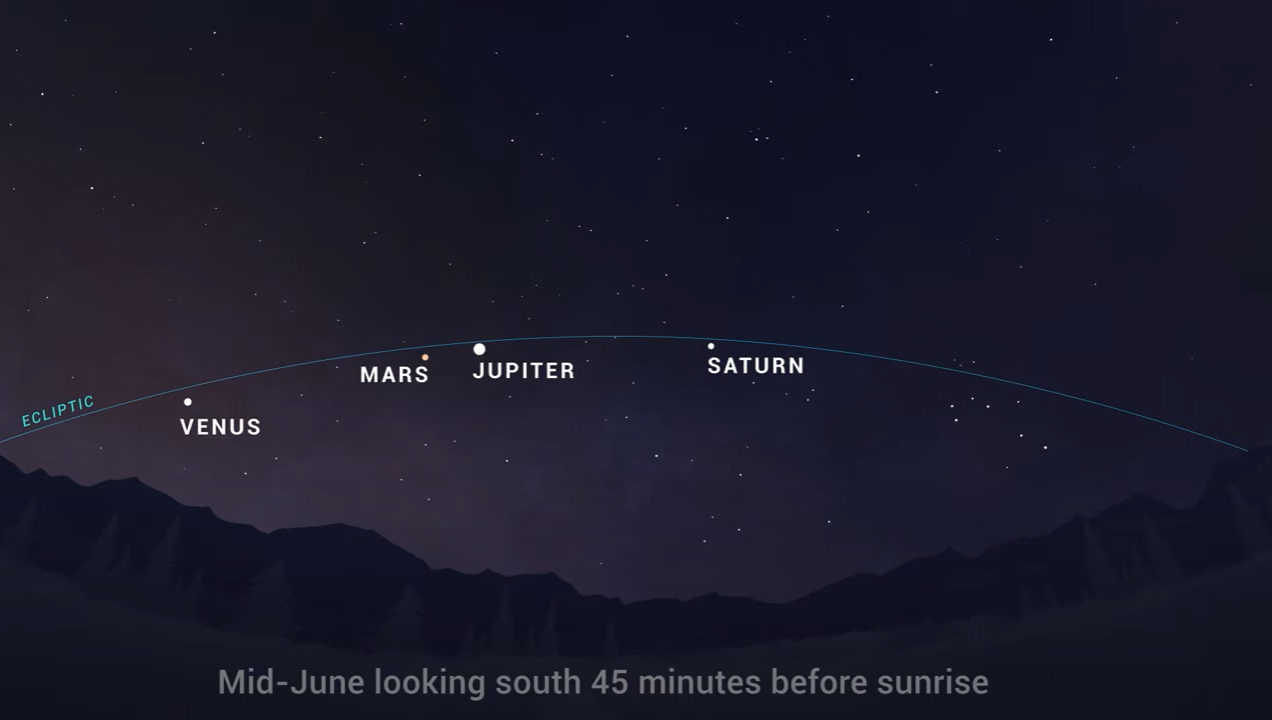
The rare alignment of five naked-eye planets will begin to "break up" as they appear to grow increasingly distant from one another in the morning sky.
Mercury, Venus, Mars, Jupiter and Saturn joined up in the southeastern predawn sky this month, offering a special treat for skywatchers. The five planets appear to arc across the sky all in a row, with Mercury lying very close to the horizon. This is the first time since December 2004 that the five planets have appeared together in view above the horizon.
While we've been able to view Saturn, Mars, Jupiter and Venus in the morning sky the last couple months, Mercury was a recent addition the rare planetary alignment in June. The small planet appeared alongside the quartet on June 3 — only briefly peeking above the horizon before the glare of the rising sun made it difficult to see.
Related: The brightest planets in June's night sky: How to see them (and when)

Looking for a telescope for the next planet sight or skywatching event? We recommend the Celestron Astro Fi 102 as the top pick in our best beginner's telescope guide.
However, beginning around June 10, Mercury will become easier to spot in the morning sky. The planet will reach its greatest elongation, or farthest point from sunrise, on June 16, meaning it will be even brighter as the month progresses, according to EarthSky.org.
The five worlds appear to line up because they travel on the plane of the solar system, known as the ecliptic. The planets are aligned in order of their distance from the sun, with Mercury, closest to the sun, appearing lowest on the horizon, and the most distant, Saturn, highest in the sky. For viewers on Earth, the planets all appear close together, but these worlds are actually millions of miles or kilometers away from each other.
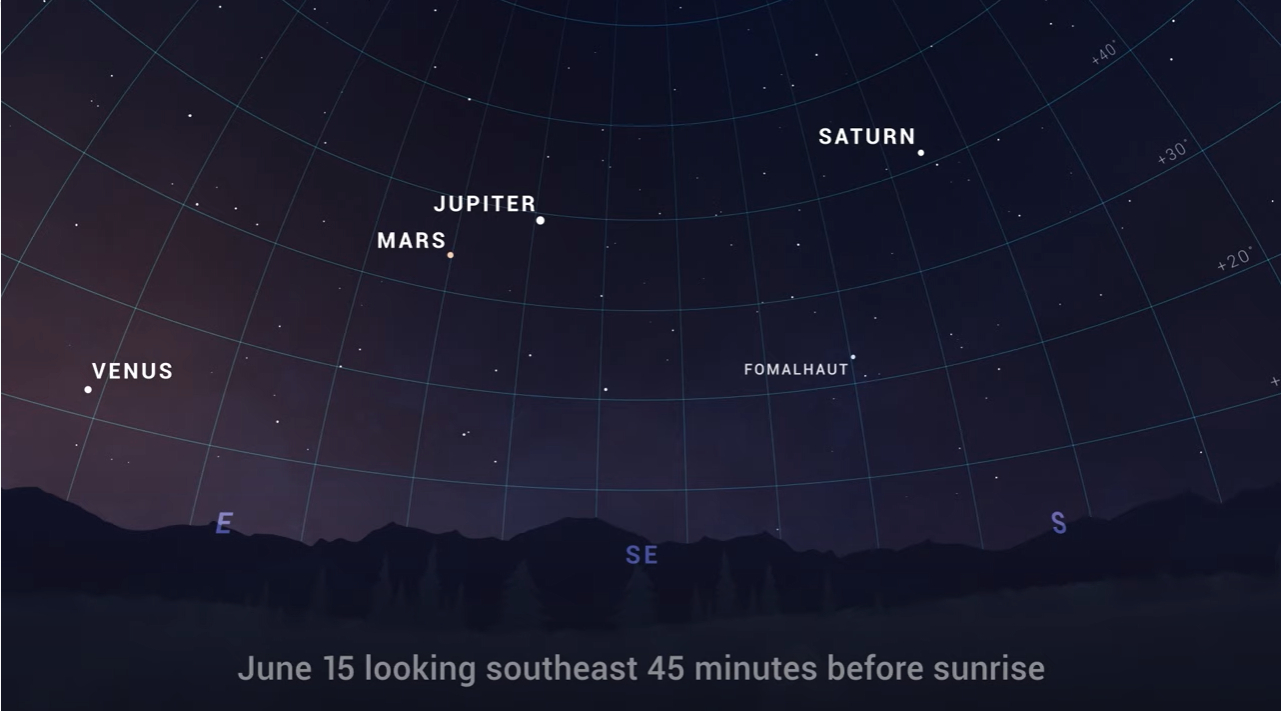
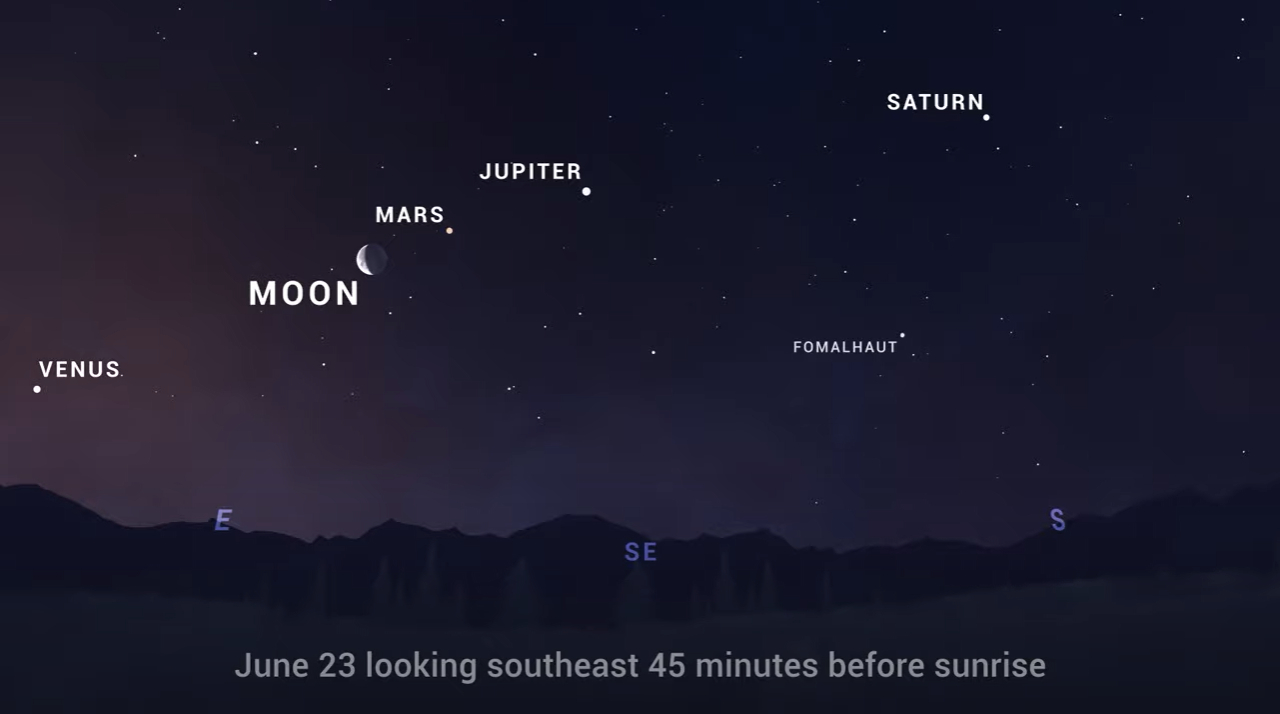
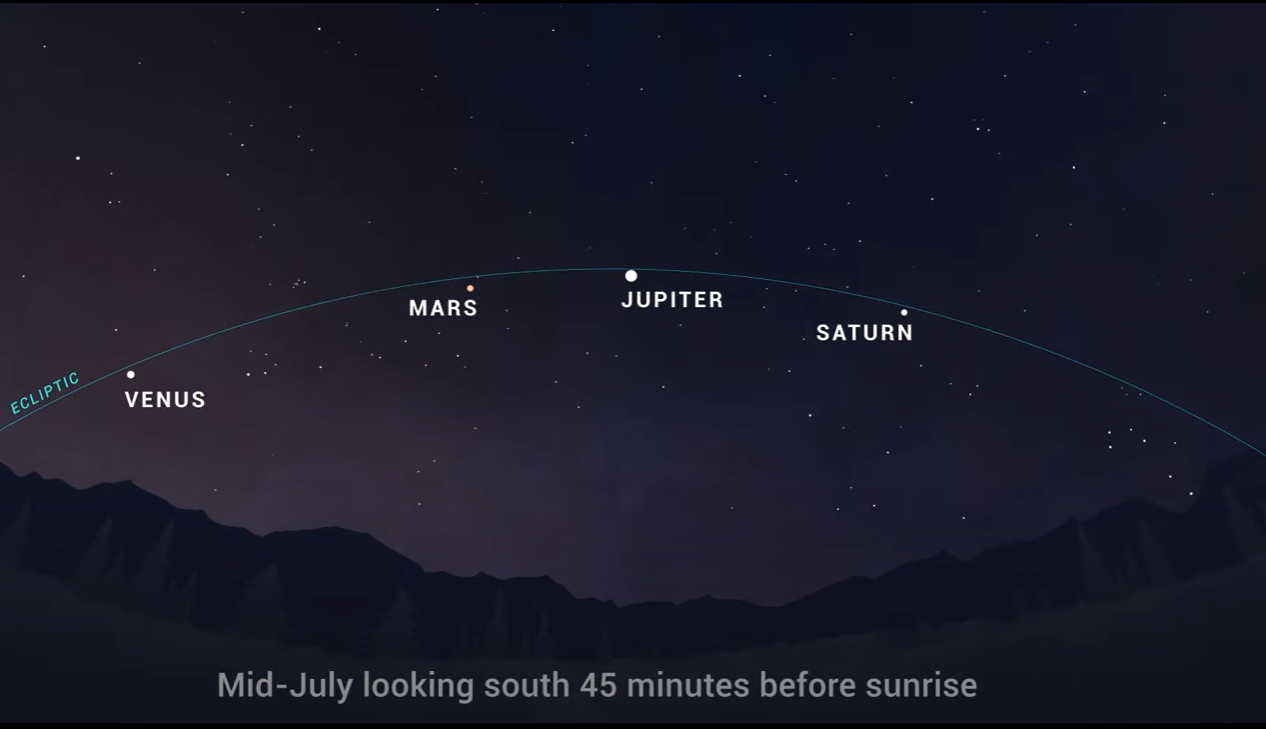
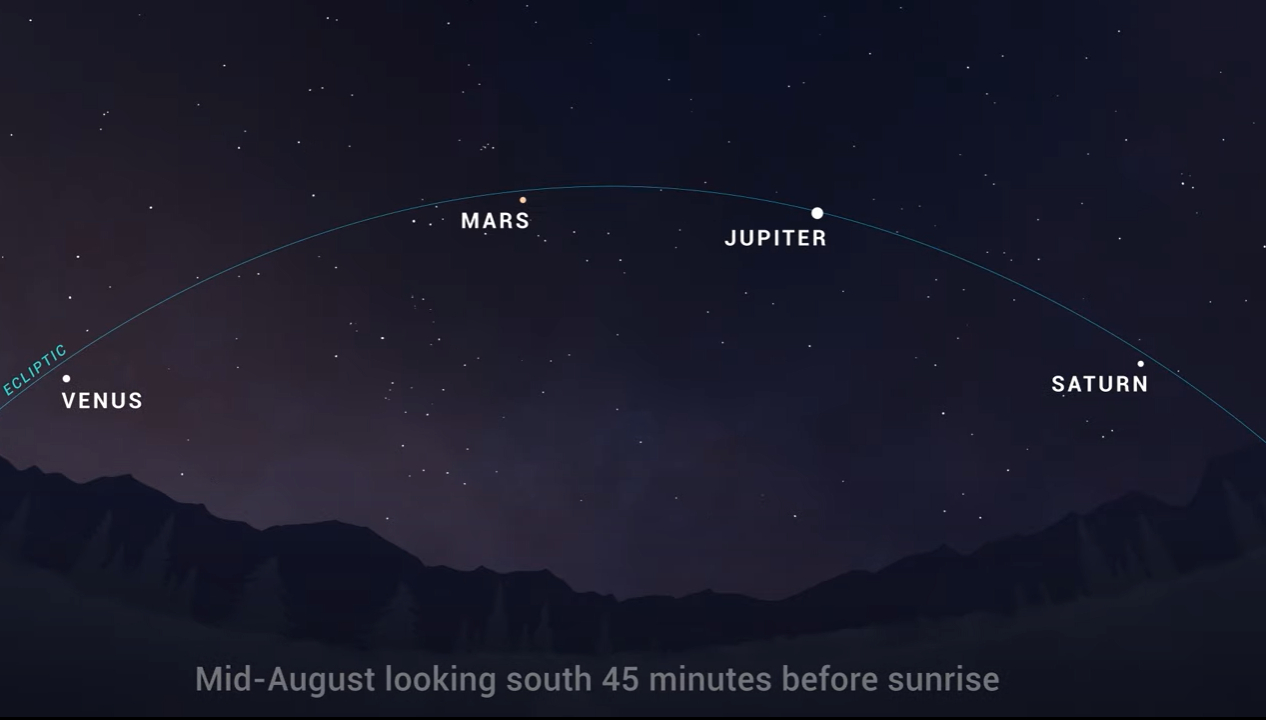
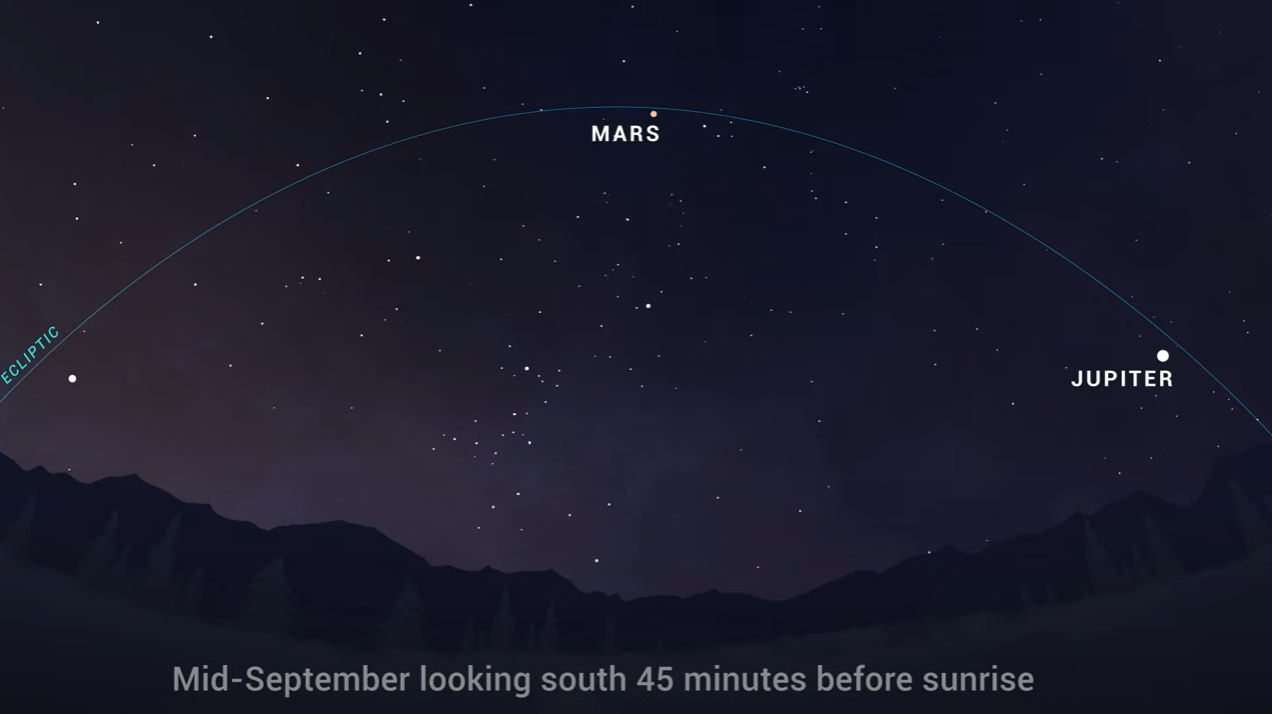
Sadly, this spectacular planetary alignment won't be visible for long. Starting in June, Saturn, Mars, Jupiter and Venus — which we've been able to view in the morning sky the last few months — will appear increasingly distant from one another.
Get the Space.com Newsletter
Breaking space news, the latest updates on rocket launches, skywatching events and more!
Over the next few months, the planets will spread out across the morning sky "so much so that Venus and Saturn will make their exits as morning objects for most observers by September," according to NASA's June Skywatching guide.
If you're looking for a new telescope or binoculars to see planets in the night sky, check our guide for the best binoculars deals and the best telescope deals now. Check out our best cameras for astrophotography and best lenses for astrophotography to prepare your gear for the next planet sight.
Editor's Note: If you snap a photo of the planetary alignment and would like to share it with Space.com's readers, send your photo(s), comments, and your name and location to spacephotos@space.com.
Follow Samantha Mathewson @Sam_Ashley13. Follow us on Twitter @Spacedotcom and on Facebook.
Join our Space Forums to keep talking space on the latest missions, night sky and more! And if you have a news tip, correction or comment, let us know at: community@space.com.

Samantha Mathewson joined Space.com as an intern in the summer of 2016. She received a B.A. in Journalism and Environmental Science at the University of New Haven, in Connecticut. Previously, her work has been published in Nature World News. When not writing or reading about science, Samantha enjoys traveling to new places and taking photos! You can follow her on Twitter @Sam_Ashley13.









